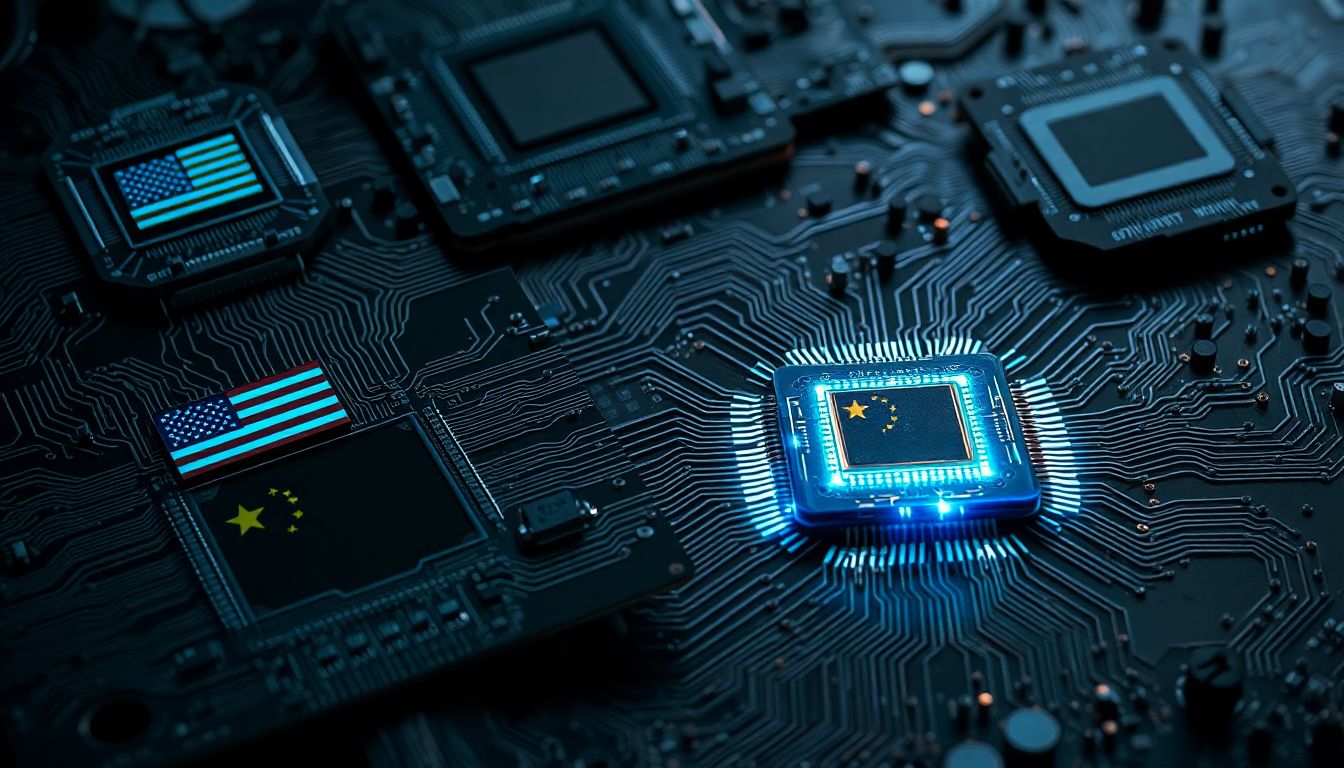
The global semiconductor market is projected to reach over $1 trillion by 2030, underscoring its vital role in our technology-driven world. Within this thriving sector, the U.S. and China are locked in an intense competition that goes beyond business. The stakes are high, impacting the future of technology, national security, and economic power globally. The battle for semiconductor dominance encapsulates a profound geopolitical and economic clash with consequences that stretch far and wide.
The Geopolitical Stakes of Semiconductor Control
Semiconductors are at the heart of modern technology. They power everything from smartphones and laptops to advanced military equipment. Their influence extends to critical infrastructure and essential services.
- Defense: Semiconductors support military technologies like drones and cyber defense systems.
- Infrastructure: Smart grids and transportation systems rely heavily on advanced chips.
- Everyday Life: Consumer electronics, healthcare devices, and automotive technologies all depend on reliable semiconductors.
Countries face national security risks by relying on foreign chip manufacturers. A disrupted supply can cripple essential services and military readiness. Thus, control over semiconductor production becomes increasingly strategic.
The US Strategy for Semiconductor Leadership
The U.S. has initiated several measures to regain and maintain its semiconductor edge. A prime example is the Chips and Science Act.
- Funding: This legislation allocates billions to boost chip manufacturing and research.
- Goals: The objective is to double the share of U.S. semiconductor production to 30% by 2030.
- Impact: Increased domestic production can enhance supply chain security.
Efforts also include fostering partnerships with private companies. Yet, challenges remain. High production costs and competition from established global players may hinder these initiatives.
China’s Semiconductor Ambitions and Challenges
China aims to dominate the semiconductor space through its “Made in China 2025” initiative. This plan focuses on self-sufficiency in semiconductor manufacturing.
- Progress: China has made strides in chip design and production capabilities.
- Challenges: The country faces significant technological barriers, including access to advanced manufacturing equipment and skilled talent. External pressures, such as U.S. sanctions, have also hindered progress.
Despite ambitions, achieving chip independence remains a complex task. The race to semiconductor superiority is fraught with obstacles.
The Role of Other Global Players in the Semiconductor Landscape
In the semiconductor sphere, several nations play crucial roles beyond the U.S. and China.
- South Korea: Home to major players like Samsung and SK Hynix, they dominate memory chip production.
- Taiwan: TSMC is a leader in advanced semiconductor manufacturing, supplying companies like Apple and NVIDIA.
The global semiconductor supply chain is intricate and vulnerable. Disruptions in one area can impact industries worldwide, highlighting the importance of collaboration among countries.
International partnerships may pave the way for shared technologies and resources, further impacting the competitive landscape.
The Future of the Semiconductor Industry: Predictions and Implications
Looking ahead, several trends may shape the semiconductor industry:
- AI and Quantum Computing: Growth in these areas will significantly increase chip demand.
- Evolving Rivalry: The U.S.-China tension may escalate with each country striving for tech supremacy.
Potential scenarios could see collaboration or even further separation, impacting global trade and national security.
The long-term consequences may influence economies, jobs, and technological advancements worldwide. The outcome of this battle will echo in everyday life, from how we communicate to how we secure our nations.
Conclusion
The semiconductor showdown between the U.S. and China is more than a business rivalry; it’s a battle with national and global implications. The stakes are high as countries seek to secure their future in technology. Understanding this intricate conflict highlights the importance of semiconductor leadership in shaping tomorrow’s world. The path ahead promises to be complex, but staying informed is crucial as technology continues to evolve.


